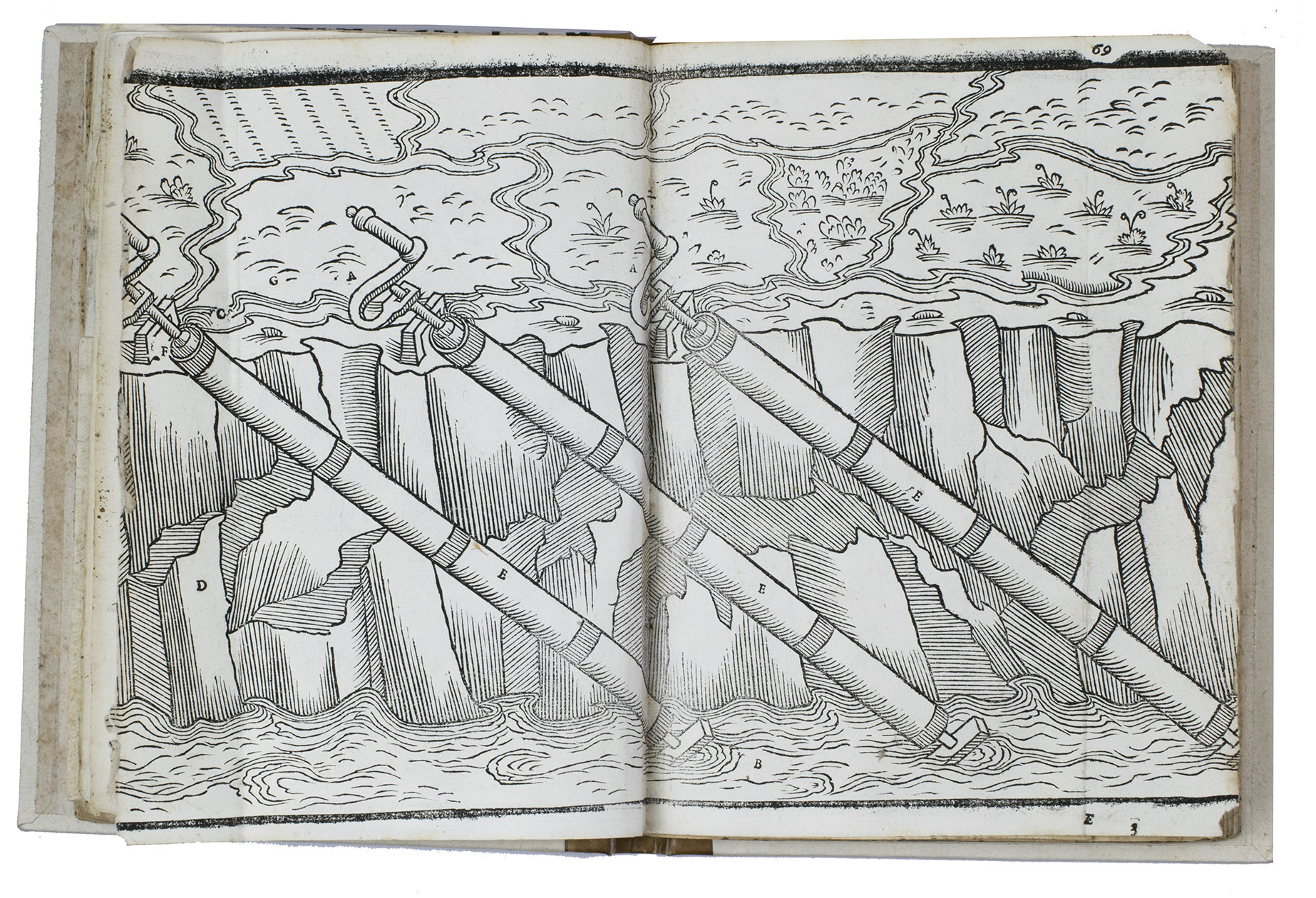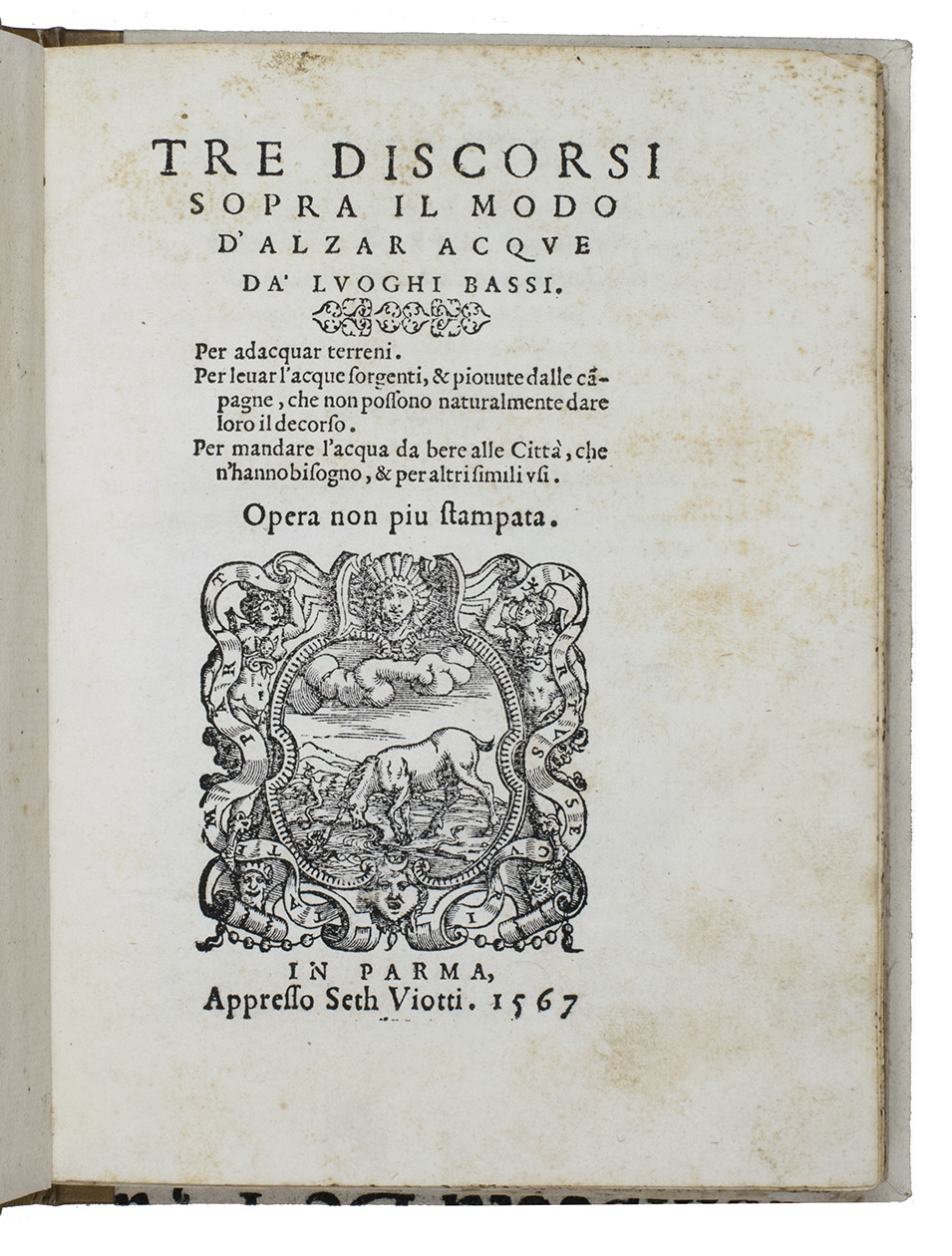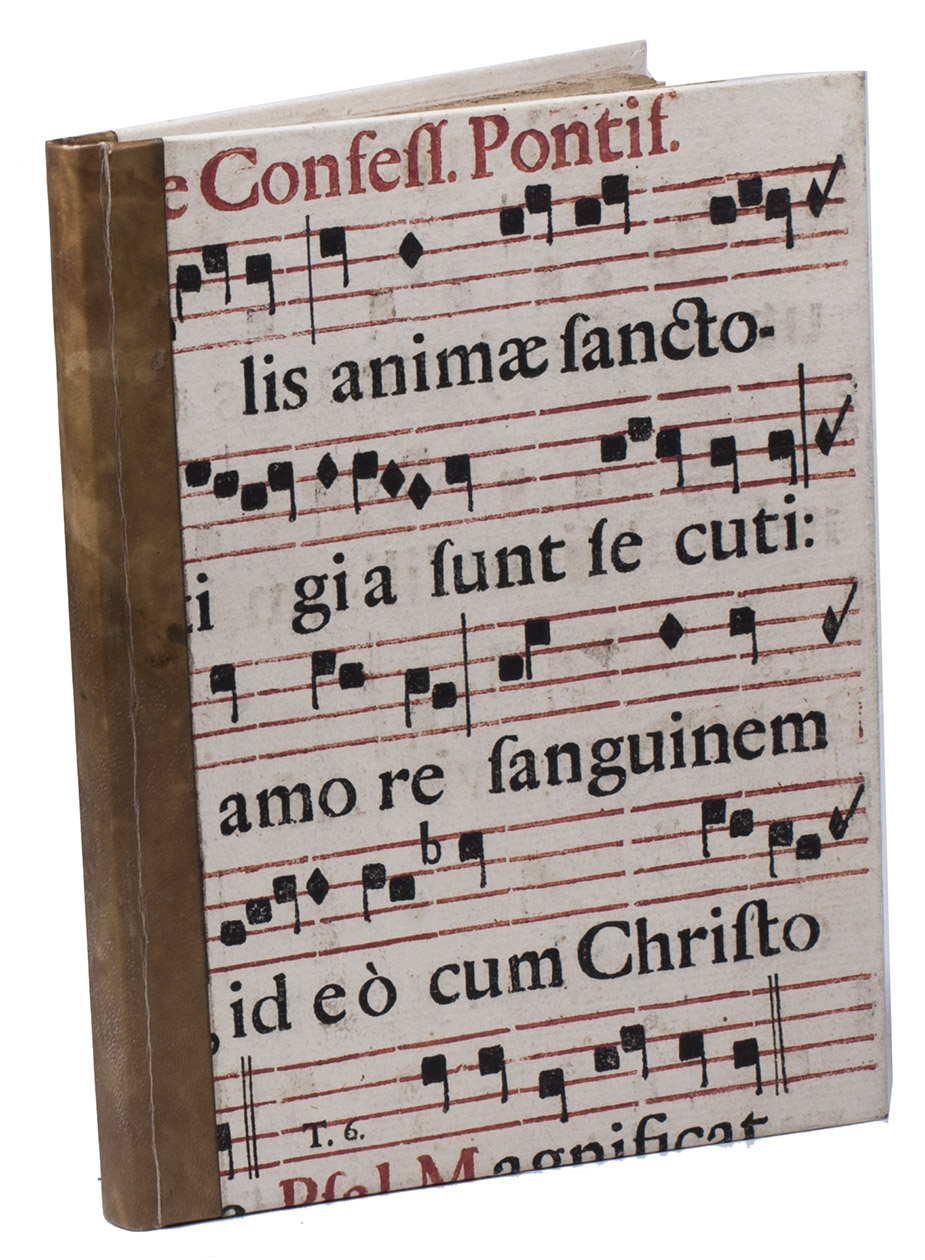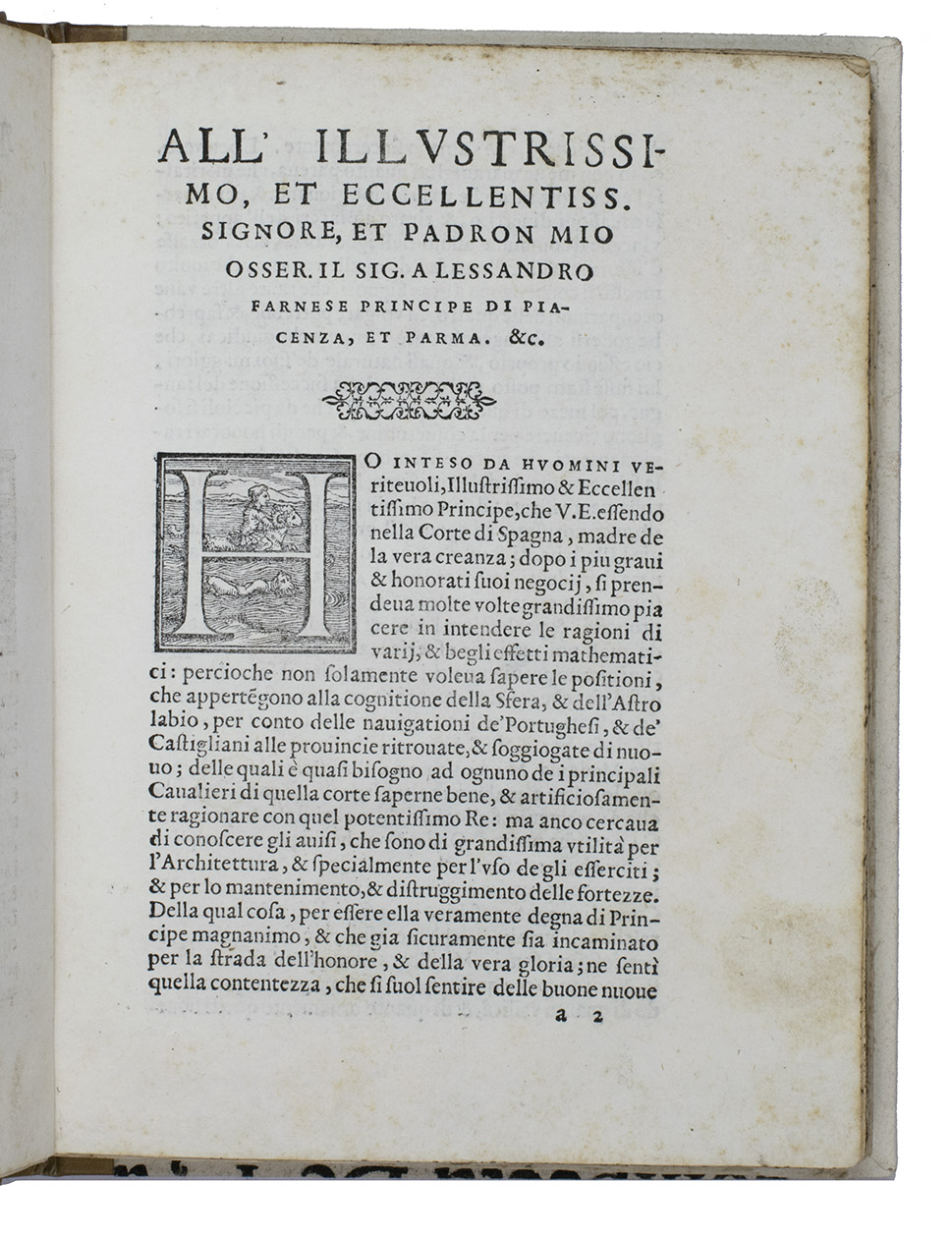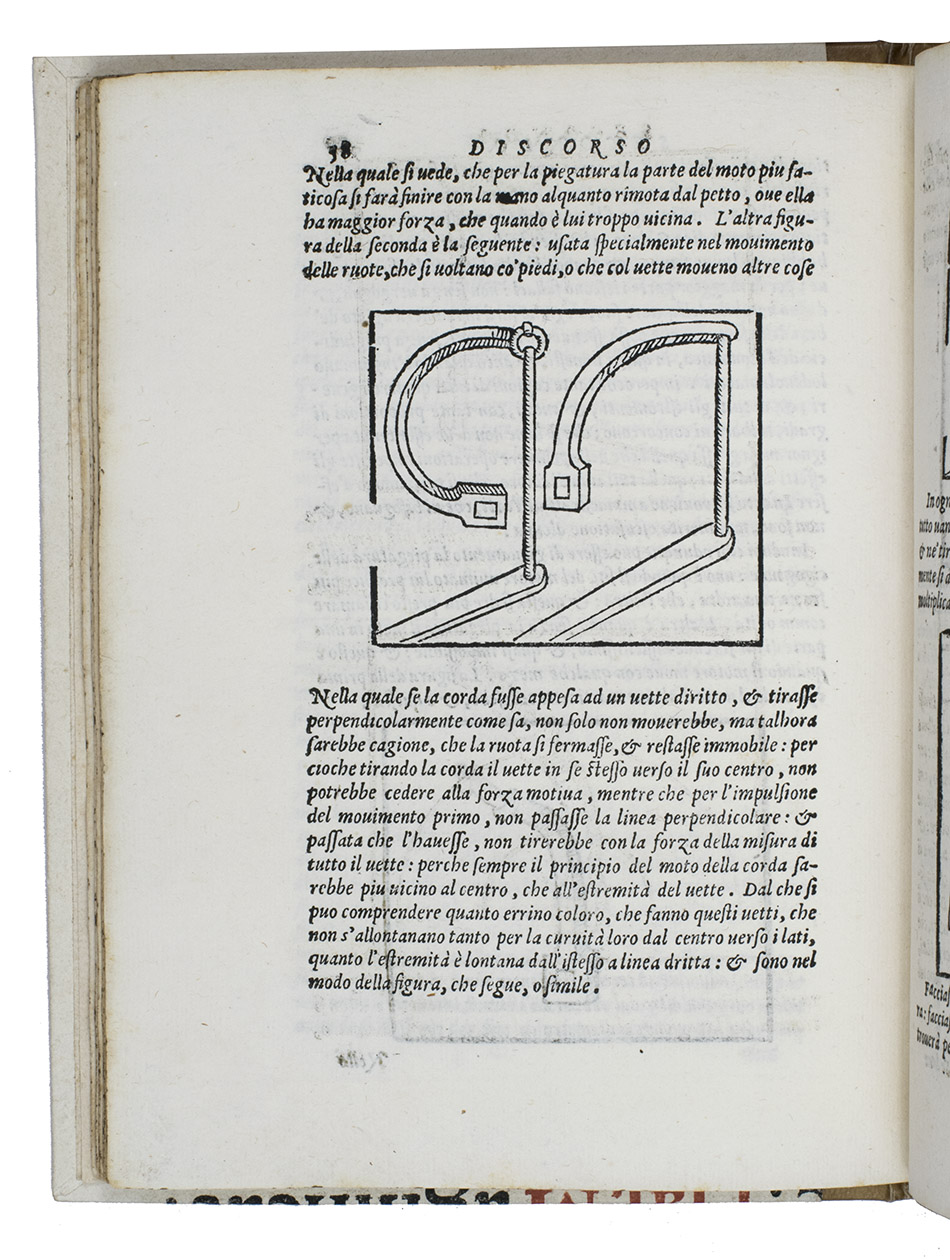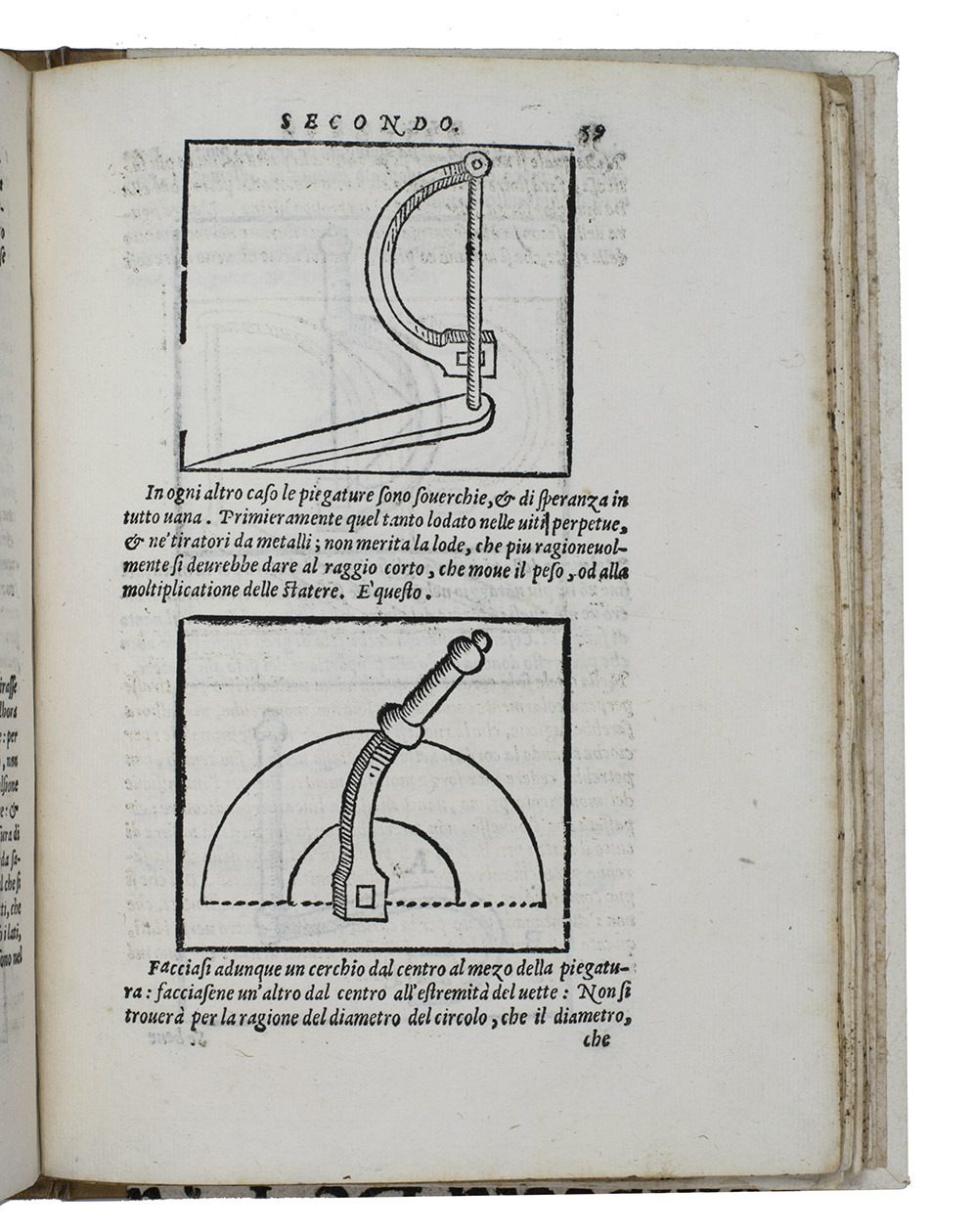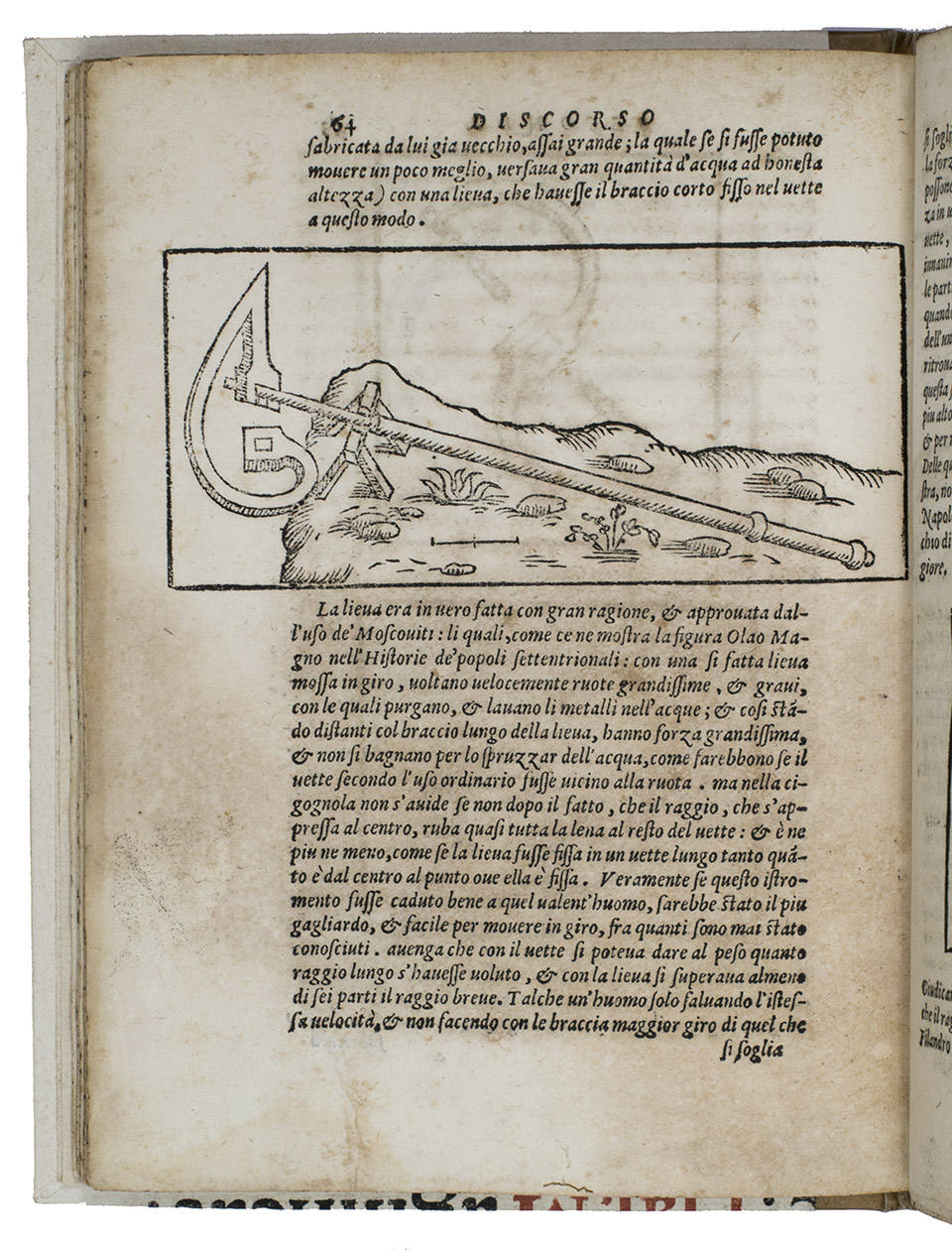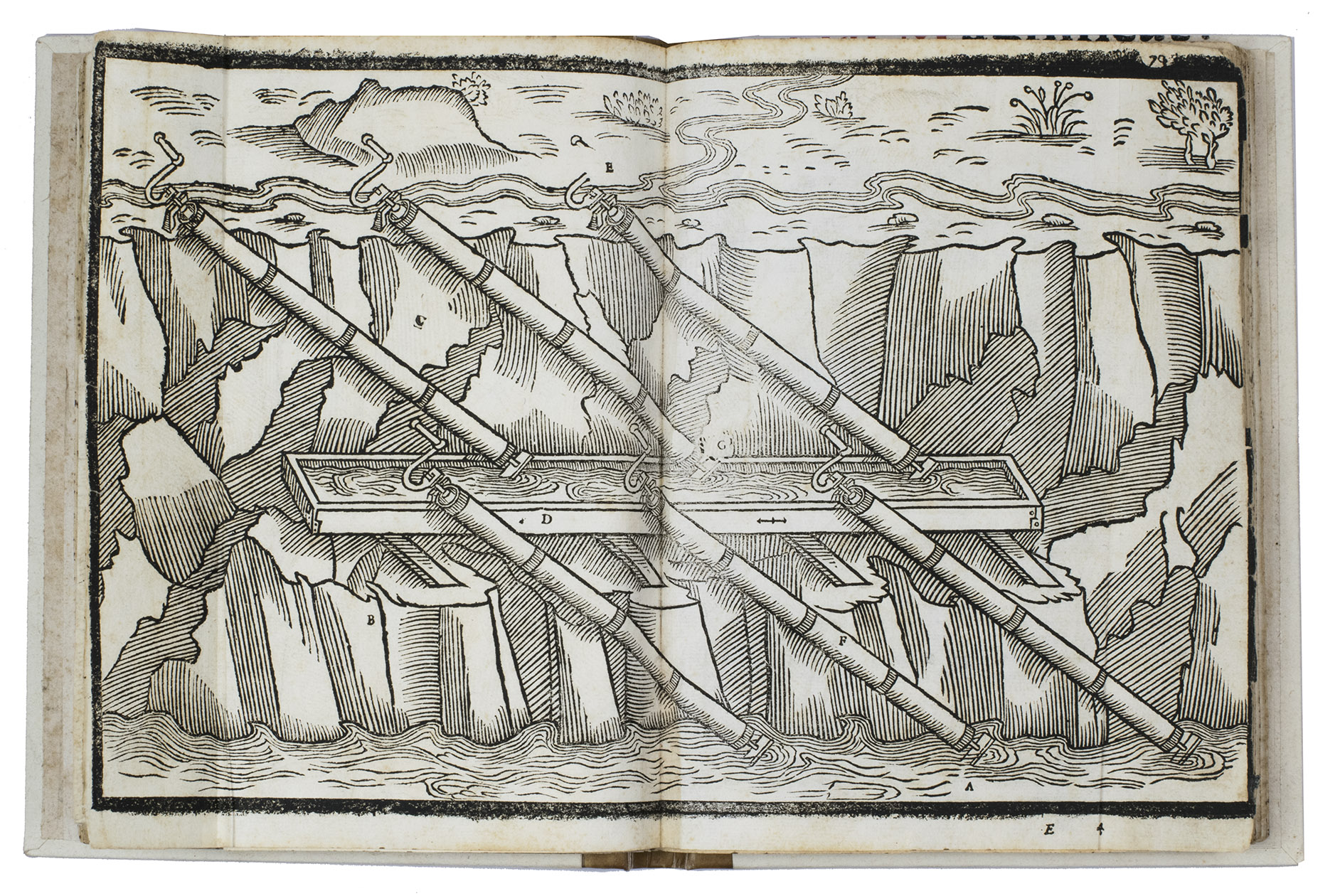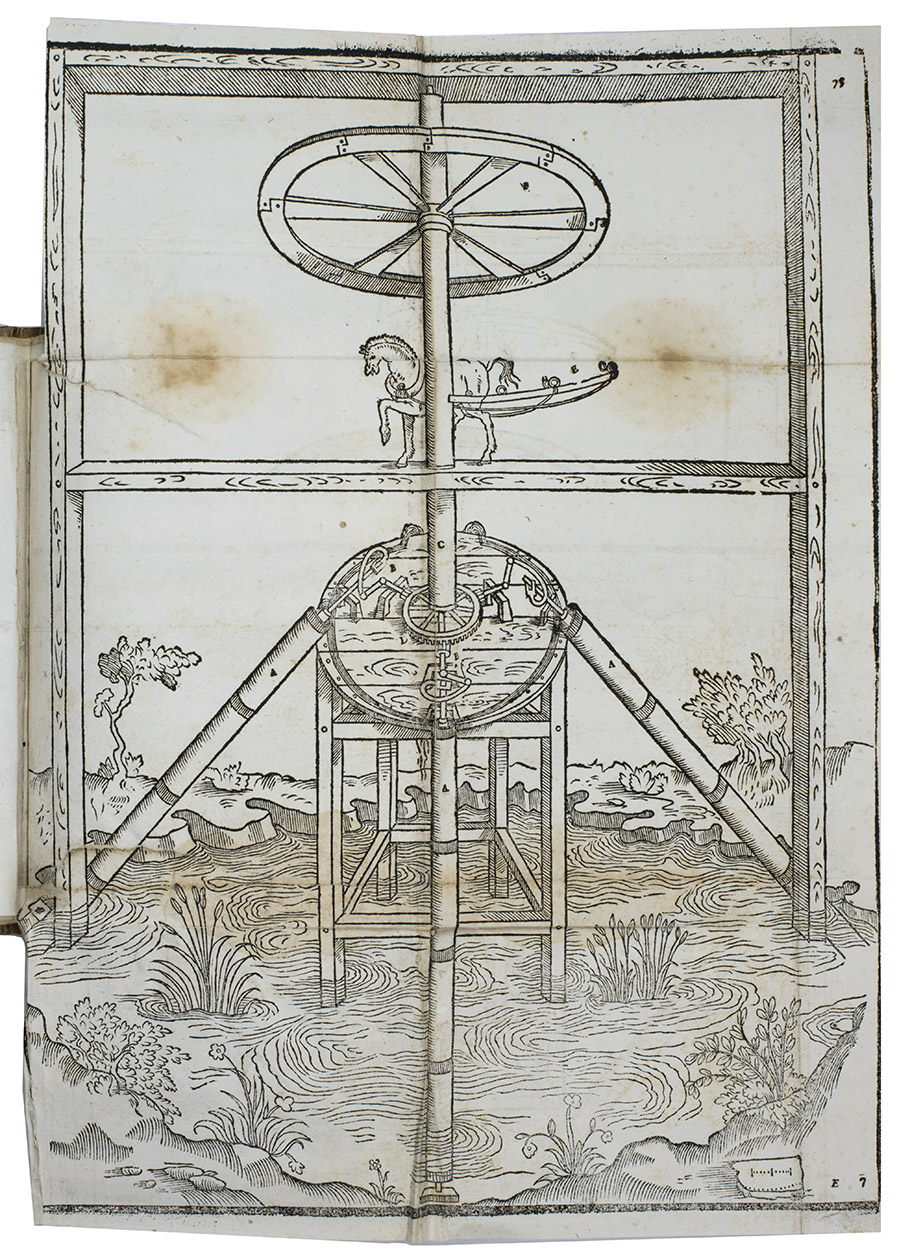CEREDI, Giuseppe.
Tre discorsi sopra il modo d'alzar acque da'luoghi bassi. Per adacquar terreni. Per levar l'acque sorgenti, & piouute dalle campagne, che non possono naturalmente dare loro il decorso. Per mandare l'acqua da bere alle città, che n'hanno bisogno, & per altri simili vsi.
Parma, Seth Viotti, 1567. 4to. With a woodcut title-vignette, woodcut decorated initials, 13 woodcut illustrations in the text and 4 folding woodcut plates. Modern half calf, boards covered with two early modern (?) leaves of liturgical music printed on paper in red and black. [1], [1 blank], [18], "100" [= 99], [1 blank] pp.
€ 4,500
First and only edition of Ceredi's rare and important study of hydraulic mechanics, one of the earliest works on the subject. In this beautifully illustrated work, the 16th-century Italian hydraulic engineer Giuseppe Ceredi describes not only the construction of the Archimedes screw, but also how to improve it and how to use it for the drainage and irrigation of fields, as he considered the devices in use to be inefficient. Although the screw, invented by Archimedes in the 3th century BC, was widely used in the classical antiquity, no clear description or instructions for building it existed in Ceredis time, though the device was known to him and his contemporaries. With the present work, he tried to improve Archimedess design and he for the first time published a proposal for a systematic scheme of irrigation, using a standardized mechanical device. Besides improving an old mechanical device, he also considers the economic, health and agricultural aspects of the Archimedes screw. Ceredis present publication should be considered one of the most important publications in the history of hydraulic science.
Binding with only some very small spots. Some foxing (particularly at the beginning and at the end of the book), spots and small stains throughout, some leaves a little browned, some tears on the folding lines of the third plate (partly repaired), first two folding plates bound in upside down, edges of the folding plates slightly frayed in some places. Overall in good condition. A rare and important, though little-known, work. Adams C1280; BM STC Italian, p. 165; EDIT16 10827; Honeyman 661; OPAC SBN BVEE003725; Riccardi I, 339-440; USTC 821629.
Related Subjects:
